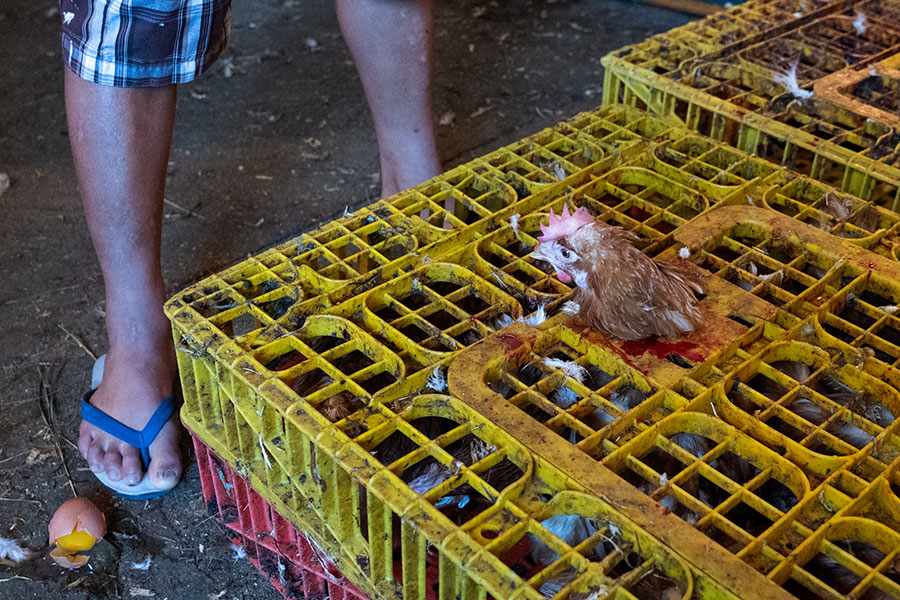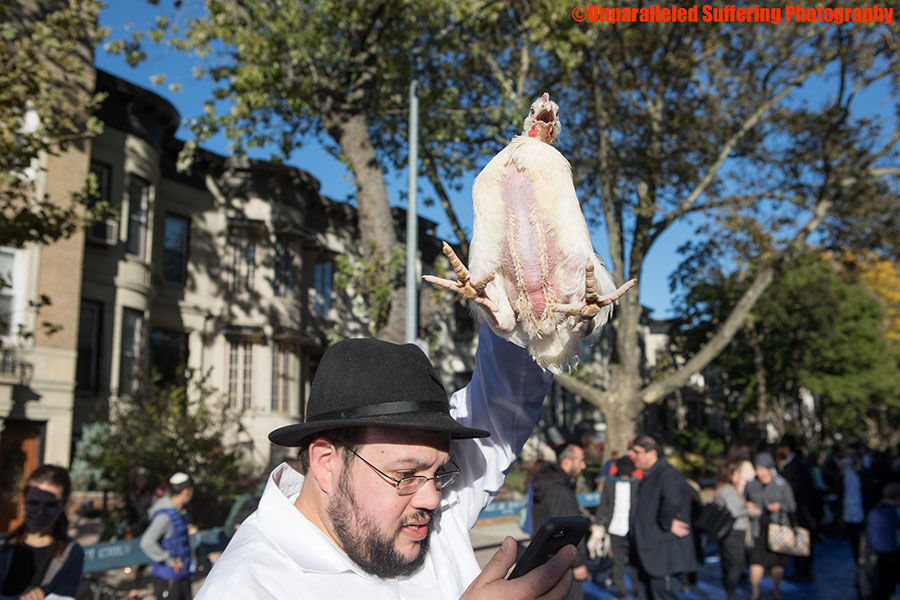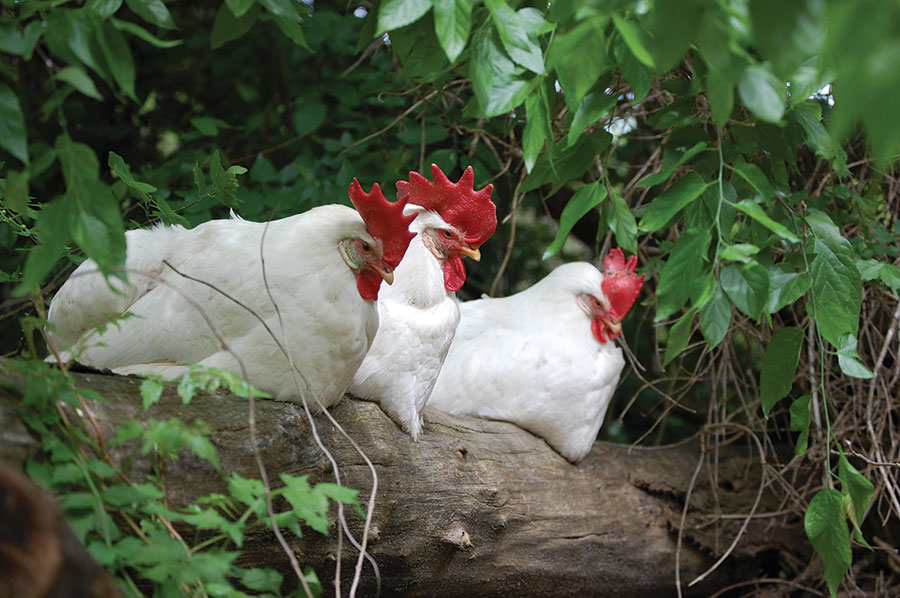Live Bird (Poultry) Markets

©Unparalleled Suffering Photography
Live bird markets are storefront slaughterhouses where chickens, turkeys, ducks, geese, guinea fowl, peafowl, chukars (partridges), quails, pigeons, and pheasants are caged in filth awaiting slaughter in a bloody back room. Live animal markets are similar to live animal auctions, except that an auction comprises birds assembled from various locations specifically for further sale, rather than for onsite killing.
Where do the birds come from?Dealers round up birds from various sources including auctions, other live poultry markets, “free-range” and backyard operations, flea markets, game-bird farms, and factory farms. The markets buy these birds to kill them for resale to walk-in customers, although some markets also sell them to customers to kill at home.
The birds are trucked from one spot to another, often traveling hundreds of miles across state lines without water or food in all kinds of weather. For example, in one report, chickens infected with avian influenza in a Philadelphia market were supplied by a dealer from New Jersey who bought the infected birds at an auction in Manheim, Pennsylvania.

©Unparalleled Suffering Photography
At the market

©Unparalleled Suffering Photography
Birds who end up in the market are typically sick, malnourished, injured, and terrified. At the market they are grabbed from the transport cages and stuffed into cages stacked in tiers often on wheeled carts. The encrusted cages contain filthy food trays and dirty or empty water containers often full of feces. The markets smell like the squalid shops they are: places of disease, suffering, cruelty, filth, dying, and death. Huddled in their cages, the birds are forced to listen to the screams of other birds being slaughtered behind a dirty curtain or even killed directly in front of each other.

©Unparalleled Suffering Photography
Unsold birds and slaughter remains are sold to dealers or rendering companies, or “simply handled as typical garbage,” as a New York State slaughter inspector explained about disposal.

©Unparalleled Suffering Photography
Laws
Federal or state inspectors visit a market two or three times a year at most, as a perfunctory gesture. State animal cruelty laws are seldom or never enforced. In San Francisco, markets cited by the Department of Animal Care & Control are not prosecuted. The California Department of Food & Agriculture and its counterparts in other states turn a blind eye.

©Unparalleled Suffering Photography
Live bird markets are linked to frequent avian influenza outbreaks in the U.S. In Asia, these disease-ridden shops are called “wet” markets. Each year, New York and New Jersey markets alone sell more than 80 million chickens and other birds brought in from places no one keeps track of. Although live animal markets spread bird flu, bacterial diseases and the corona virus to both humans and other animals, U.S. Department of Agriculture and state agriculture agencies refuse to shut them down and pay mere lip service to regulating them.

©Unparalleled Suffering Photography
Live poultry markets sell birds for ritual sacrifice.
As an end to their whole sad, miserable life, many live birds are sold by poultry markets to be tortured and killed in sacrificial rituals like Santeria and Kaporos.

©Unparalleled Suffering Photography

©Unparalleled Suffering Photography
Live poultry markets are dirty, cruel, contaminated places. They are not an alternative to factory farms. They are miniature factory farms and extensions of the factory-farming industry. If you encounter media coverage portraying these putrid places in a rosy light, send a letter to the editor and/or protest to the program director and alert your social media. Inform local health officials that you do not want a slaughter market in your neighborhood. Leaflet in front of live poultry markets and educate people about their ugly reality. Check your local farmers markets to be sure live animals are not being sold. Support your local vegetarian society or start your own group featuring delicious, nutritious animal-free cuisine and education.
For more information about live bird markets and to order copies of this brochure for distribution, visit www.upc-online.org/livemarkets.
For great vegan recipes, check out www.upc-online.org/recipes.

Photo of UPC sanctuary hens by Davida G. Breier